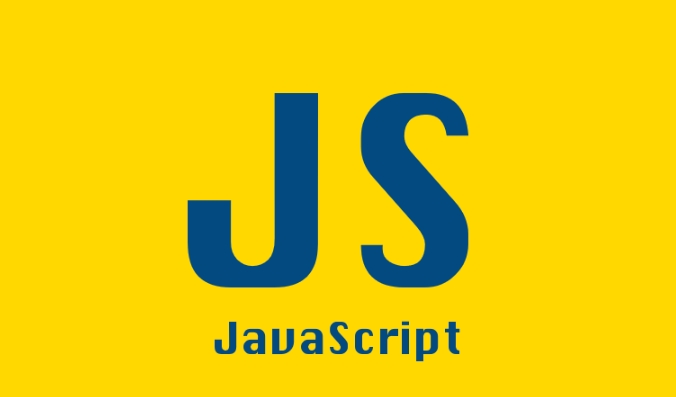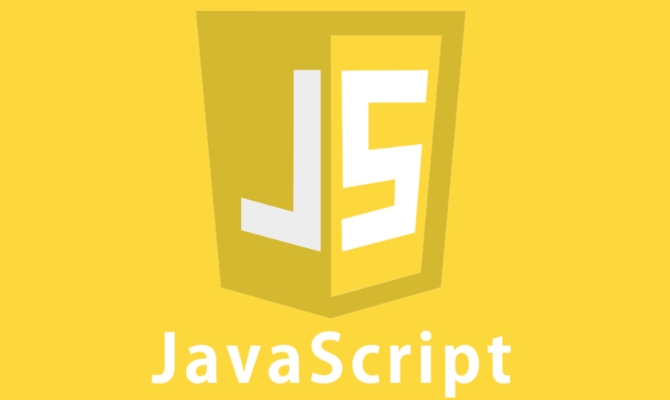Use interface for object shapes, extensibility, and class implementation due to declaration merging and clean inheritance with extends; 2. Use type for unions, tuples, primitives, and advanced type logic like mapped or conditional types, as it supports complex type operations; 3. Follow conventions: prefer interface for public APIs and object structures, type for type aliases and non-object types; 4. Interfaces support merging and are ideal for OOP patterns, while types offer greater flexibility for complex scenarios; choose based on use case and maintain consistency.

When working with TypeScript, you’ll often need to define custom types for objects, functions, or unions. Two of the most common ways to do this are using interface and type. While they can sometimes be used interchangeably, there are key differences that matter in practice.

Here’s a clear breakdown of TypeScript interfaces vs. types, and when to use each.
1. Extensibility: Interfaces Can Be Extended and Merged
One of the biggest differences is that interfaces are "open" — you can extend or re-open them later.

interface User {
name: string;
}
interface User {
age: number;
}
// TypeScript merges these into one:
// User { name: string; age: number }This is called declaration merging, and it's useful in large codebases or when working with libraries. You can add new properties to an interface across different files.
With type, this isn't possible:

type Person = {
name: string;
};
type Person = {
age: number;
};
// ? Error: Duplicate identifier 'Person'You also can't extend a type as easily. While you can use intersection types (&), it’s less clean than extends with interfaces.
interface Admin extends User {
role: string;
}Clean and readable. With type, you’d do:
type Admin = User & { role: string };It works, but it’s less intuitive for object inheritance patterns.
2. Flexibility: Types Can Represent More Complex Shapes
type is more powerful when you need advanced type logic.
You can use type for:
- Union types
- Tuple types
- Mapped types
- Conditional types
type ID = string | number; type Coordinates = [number, number]; type Maybe<T> = T | null | undefined; type Status = 'loading' | 'success' | 'error';
These aren’t possible with interface. For example:
interface Status {
// ? Can't represent a union of string literals like 'success' | 'error'
}So if you're dealing with unions, primitives, or complex type operations, type is the way to go.
3. Readability and Convention
There’s a community convention (especially from Airbnb and large-scale projects):
- Use
interfacefor object shapes and public APIs - Use
typefor everything else
This improves readability:
interface User {
name: string;
email: string;
}
type Role = 'admin' | 'user';
type Callback = (result: User) => void;It’s clear at a glance what’s a data structure and what’s a type alias.
Also, classes can only implement interfaces, not types:
class Person implements User {
name = "John";
email = "john@example.com";
}So if you’re doing OOP-style TypeScript, interfaces are more natural.
4. When to Use Which? Quick Guidelines
Here’s a practical summary:
? Use interface when:
- Defining object shapes
- Planning to extend or merge the type later
- Working with classes (
implements) - Building public APIs or libraries
? Use type when:
- Creating union types (
string | number) - Working with tuples, primitives, or functions
- Using advanced types (mapped, conditional, etc.)
- You need exact, complex type expressions
In many cases, it comes down to preference — but consistency matters.
Bottom line: Interfaces are better for objects and extensibility. Types are more flexible and powerful for complex scenarios.
Most real-world projects use both — pick the right tool for the job.
Basically, if it’s a "shape of an object," start with interface. If it’s a "type combo or logic," go with type.
The above is the detailed content of TypeScript Interfaces vs. Types: What's the Difference?. For more information, please follow other related articles on the PHP Chinese website!

Hot AI Tools

Undress AI Tool
Undress images for free

Undresser.AI Undress
AI-powered app for creating realistic nude photos

AI Clothes Remover
Online AI tool for removing clothes from photos.

Clothoff.io
AI clothes remover

Video Face Swap
Swap faces in any video effortlessly with our completely free AI face swap tool!

Hot Article

Hot Tools

Notepad++7.3.1
Easy-to-use and free code editor

SublimeText3 Chinese version
Chinese version, very easy to use

Zend Studio 13.0.1
Powerful PHP integrated development environment

Dreamweaver CS6
Visual web development tools

SublimeText3 Mac version
God-level code editing software (SublimeText3)
 How to make an HTTP request in Node.js?
Jul 13, 2025 am 02:18 AM
How to make an HTTP request in Node.js?
Jul 13, 2025 am 02:18 AM
There are three common ways to initiate HTTP requests in Node.js: use built-in modules, axios, and node-fetch. 1. Use the built-in http/https module without dependencies, which is suitable for basic scenarios, but requires manual processing of data stitching and error monitoring, such as using https.get() to obtain data or send POST requests through .write(); 2.axios is a third-party library based on Promise. It has concise syntax and powerful functions, supports async/await, automatic JSON conversion, interceptor, etc. It is recommended to simplify asynchronous request operations; 3.node-fetch provides a style similar to browser fetch, based on Promise and simple syntax
 JavaScript Data Types: Primitive vs Reference
Jul 13, 2025 am 02:43 AM
JavaScript Data Types: Primitive vs Reference
Jul 13, 2025 am 02:43 AM
JavaScript data types are divided into primitive types and reference types. Primitive types include string, number, boolean, null, undefined, and symbol. The values are immutable and copies are copied when assigning values, so they do not affect each other; reference types such as objects, arrays and functions store memory addresses, and variables pointing to the same object will affect each other. Typeof and instanceof can be used to determine types, but pay attention to the historical issues of typeofnull. Understanding these two types of differences can help write more stable and reliable code.
 React vs Angular vs Vue: which js framework is best?
Jul 05, 2025 am 02:24 AM
React vs Angular vs Vue: which js framework is best?
Jul 05, 2025 am 02:24 AM
Which JavaScript framework is the best choice? The answer is to choose the most suitable one according to your needs. 1.React is flexible and free, suitable for medium and large projects that require high customization and team architecture capabilities; 2. Angular provides complete solutions, suitable for enterprise-level applications and long-term maintenance; 3. Vue is easy to use, suitable for small and medium-sized projects or rapid development. In addition, whether there is an existing technology stack, team size, project life cycle and whether SSR is needed are also important factors in choosing a framework. In short, there is no absolutely the best framework, the best choice is the one that suits your needs.
 JavaScript time object, someone builds an eactexe, faster website on Google Chrome, etc.
Jul 08, 2025 pm 02:27 PM
JavaScript time object, someone builds an eactexe, faster website on Google Chrome, etc.
Jul 08, 2025 pm 02:27 PM
Hello, JavaScript developers! Welcome to this week's JavaScript news! This week we will focus on: Oracle's trademark dispute with Deno, new JavaScript time objects are supported by browsers, Google Chrome updates, and some powerful developer tools. Let's get started! Oracle's trademark dispute with Deno Oracle's attempt to register a "JavaScript" trademark has caused controversy. Ryan Dahl, the creator of Node.js and Deno, has filed a petition to cancel the trademark, and he believes that JavaScript is an open standard and should not be used by Oracle
 Handling Promises: Chaining, Error Handling, and Promise Combinators in JavaScript
Jul 08, 2025 am 02:40 AM
Handling Promises: Chaining, Error Handling, and Promise Combinators in JavaScript
Jul 08, 2025 am 02:40 AM
Promise is the core mechanism for handling asynchronous operations in JavaScript. Understanding chain calls, error handling and combiners is the key to mastering their applications. 1. The chain call returns a new Promise through .then() to realize asynchronous process concatenation. Each .then() receives the previous result and can return a value or a Promise; 2. Error handling should use .catch() to catch exceptions to avoid silent failures, and can return the default value in catch to continue the process; 3. Combinators such as Promise.all() (successfully successful only after all success), Promise.race() (the first completion is returned) and Promise.allSettled() (waiting for all completions)
 What is the cache API and how is it used with Service Workers?
Jul 08, 2025 am 02:43 AM
What is the cache API and how is it used with Service Workers?
Jul 08, 2025 am 02:43 AM
CacheAPI is a tool provided by the browser to cache network requests, which is often used in conjunction with ServiceWorker to improve website performance and offline experience. 1. It allows developers to manually store resources such as scripts, style sheets, pictures, etc.; 2. It can match cache responses according to requests; 3. It supports deleting specific caches or clearing the entire cache; 4. It can implement cache priority or network priority strategies through ServiceWorker listening to fetch events; 5. It is often used for offline support, speed up repeated access speed, preloading key resources and background update content; 6. When using it, you need to pay attention to cache version control, storage restrictions and the difference from HTTP caching mechanism.
 Leveraging Array.prototype Methods for Data Manipulation in JavaScript
Jul 06, 2025 am 02:36 AM
Leveraging Array.prototype Methods for Data Manipulation in JavaScript
Jul 06, 2025 am 02:36 AM
JavaScript array built-in methods such as .map(), .filter() and .reduce() can simplify data processing; 1) .map() is used to convert elements one to one to generate new arrays; 2) .filter() is used to filter elements by condition; 3) .reduce() is used to aggregate data as a single value; misuse should be avoided when used, resulting in side effects or performance problems.
 JS roundup: a deep dive into the JavaScript event loop
Jul 08, 2025 am 02:24 AM
JS roundup: a deep dive into the JavaScript event loop
Jul 08, 2025 am 02:24 AM
JavaScript's event loop manages asynchronous operations by coordinating call stacks, WebAPIs, and task queues. 1. The call stack executes synchronous code, and when encountering asynchronous tasks, it is handed over to WebAPI for processing; 2. After the WebAPI completes the task in the background, it puts the callback into the corresponding queue (macro task or micro task); 3. The event loop checks whether the call stack is empty. If it is empty, the callback is taken out from the queue and pushed into the call stack for execution; 4. Micro tasks (such as Promise.then) take precedence over macro tasks (such as setTimeout); 5. Understanding the event loop helps to avoid blocking the main thread and optimize the code execution order.






